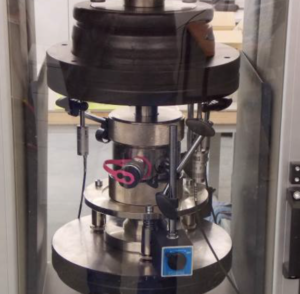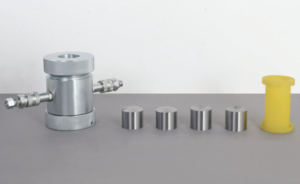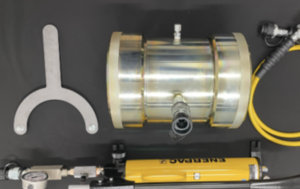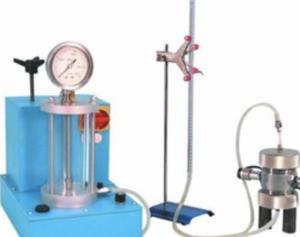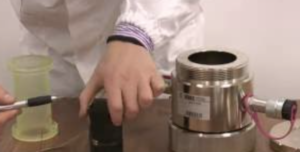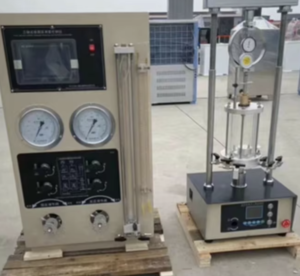Vacuum saturation is a key step in preparing soil specimens for triaxial testing, ensuring accurate pore pressure measurements and shear strength results.
In triaxial testing, vacuum saturation removes air from the soil specimen before water infiltration, improving saturation efficiency and ensuring data reliability.
What Equipment Is Needed for Vacuum Saturation?
A proper vacuum saturation setup includes:
- Vacuum Pump1 – Creates the negative pressure to extract air from the specimen
- Vacuum Chamber or Cell – Encloses the sample during air removal
- Latex Membrane – Encases the specimen to prevent water leakage
- Back Pressure System2 – Introduces water into the specimen after vacuuming
- Pressure Gauges & Valves – Monitor and control vacuum and saturation pressures
| Thiết bị | Function in Saturation Process |
|---|---|
| Vacuum Pump | Removes air pockets from soil |
| Back Pressure Unit | Forces water into specimen pores |
| Latex Membrane | Duy trì tính toàn vẹn mẫu |

How Does the Vacuum Saturation Process Work?
- Specimen Preparation – The soil sample is enclosed in a latex membrane and placed in the triaxial cell3.
- Vacuum Application – The vacuum pump lowers the pressure around the specimen, drawing out trapped air.
- Water Introduction – Once a sufficient vacuum is reached, water is introduced under back pressure.
- B-Value Check – Saturation is confirmed by measuring the B-value4 (≥ 0.95 for full saturation).
This sequence ensures the specimen is free of significant air voids before testing.
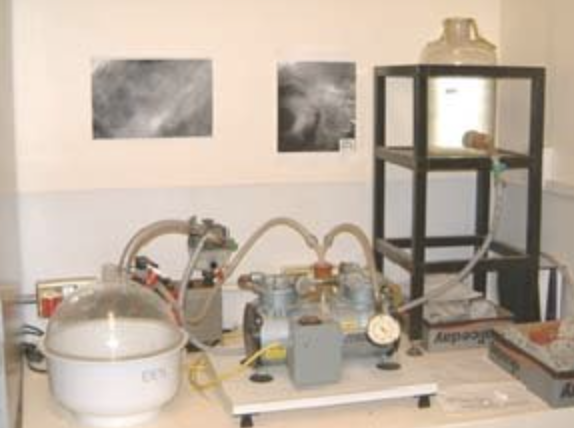
Why Is Vacuum Saturation Critical for Precision?
Without proper saturation:
- Air Pockets5 remain, causing inaccurate pore pressure readings.
- Shear Strength Data6 becomes unreliable due to incomplete saturation.
- Repeatability Issues occur, making comparisons between tests invalid.
Vacuum saturation ensures the soil’s pore space is completely water-filled, replicating in-situ groundwater conditions for realistic results.

Common Errors and How to Avoid Them
| Common Error | Prevention Tip |
|---|---|
| Applying vacuum too quickly | Gradually reduce pressure to avoid membrane collapse |
| Skipping B-value verification | Always measure B-value before starting shear phase |
| Poor membrane sealing | Double-check O-rings and sealing grease |
| Using low-capacity vacuum pump | Select a pump with adequate flow rate and vacuum level |
Following best practices minimizes setup errors and improves test accuracy.
Phần kết luận
Vacuum saturation is essential for achieving precise, repeatable results in triaxial testing. By using the right equipment, following a controlled process, and avoiding common mistakes, geotechnical labs can ensure specimens are fully saturated and ready for accurate strength and deformation analysis.
-
Understanding the role of a vacuum pump is crucial for effective saturation processes. ↩
-
Exploring the back pressure system will enhance your knowledge of water introduction in saturation. ↩
-
Exploring the workings of a triaxial cell will enhance your knowledge of soil mechanics and testing methodologies. ↩
-
Understanding B-value is crucial for ensuring accurate soil testing and analysis, making this resource invaluable. ↩
-
Understanding the impact of air pockets can help improve soil testing accuracy and reliability. ↩
-
Exploring this topic can provide insights into the importance of saturation for accurate shear strength measurements. ↩


